- Register
- Log in to Tune-In
- Wishlist (0)
-
Shopping cart
(0)
You have no items in your shopping cart.
Beatles News
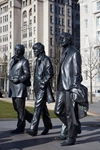
When I suggested to my Beatles-obsessed husband that we should go to Liverpool, I won points for the rest of our marriage. What I didn’t realize until later, when I was standing on a certain lane behind the shelter in the middle of the roundabout, was that I would actually enjoy myself. Very strange.
I had wondered if, in making such a pilgrimage, there would be a place for the nonreligious. But when slanted sunbeams fell on Eleanor Rigby’s headstone as if on cue, I shivered a little and smiled.
My husband, Ricky, knows all the answers (at least when it comes to the Beatles), so I let him engage in trivia contests with our tour guide in Liverpool. Freed from the tug of minutiae, I was able to marvel in the phenomenon of the Fab Four: how one band united the world, and continues to do so, 50 years after the release of “Sgt. Pepper’s Lonely Hearts Club Band.”
Source: nytimes.com
details
You’ve heard news anchors introduce guests with the obligatory “joining us now via satellite,” for decades. That’s only possible because of the vast network of communications satellites currently in orbit around the earth.
The Intelsat-1, nicknamed Early Bird, pioneered this new era of global communication via space when it launched on April 6 1965. It was the first commercial satellite to be placed in geosynchronous orbit, which means it follows the daily rotation of the earth, albeit on a different inclination.
So, if you were observing the satellite from the ground it would appear to be in the same position. This is necessary to maintain continuous transmission, as the line of sight is never lost. Also due to the higher position in orbit, these satellites can cover and connect more of the earth.
Early Bird took full advantage, becoming the first satellite to enable constant satellite communication between Europe and North America. Phone calls, faxes and television broadcasts were all transmitted by the dinky satellite, which weighed just 34.5kg and measured a mere 76 x 61 cm. It featured just two 6W transponders with 50 MHz bandwidth and was covered with 6,000 solar cells.
details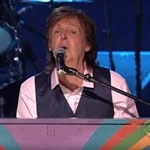
Sir Paul McCartney, Samuel L Jackson, Mariah Carey, Katy Perry, Harry Styles and Meryl Streep are just some of the stars who have shared their "dreams" to mark the 50th anniversary of the Reverend Martin Luther King Jr's assassination.
They joined the likes of Mary J Blige, Bruce Springsteen, Tiger Woods and Billie Jean King to pledge their visions for the future in a video on Wednesday.
Music legend Stevie Wonder , who masterminded the tribute, urged viewers to share their hopes on Twitter under the hashtag #DreamStillLives in honour of the civil rights icon of non-violence, who was silenced aged 39 by a gunman.
Former US president Mr Obama, joined by his wife Michelle, said: "Our dream is of a world where we recognise each other's common humanity and that we shape for our children, peace, justice and opportunity for all."
Source: Sam Blewett/mirror.co.uk
details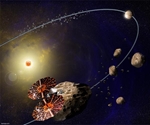
The Beatles are one of the greatest cultural phenomena to come from the 20th Century, yet many people are unaware of their impact on science.
In 'Here, There and Everywhere', inspired by the book 'La scienza dei Beatles' ('The science of the Beatles'), Viviana Ambrosi shows how the Fab Four can bring the study of celestial objects and the exploration of the universe closer to a large public audience. This is set out in a presentation on 3rd April at the European Week of Astronomy and Space Science in Liverpool. The Beatles formed at the start of the space race, and have always inspired scientists, whether they knew it or not.
The Beatles' record company (EMI) used money from the sale of the White Album to fund scientific research. Some of which went towards Godfrey Hounsfield's research into X-rays, which led to the invention of the CT scanner, for which he shared a Nobel Prize.
Source: spacedaily.com
details
“Spring is here and Leeds play Chelsea tomorrow and Ringo and George and John and Paul are alive and well and full of hope. The world is still spinning and so are we and so are you. When the spinning stops – that’ll be the time to worry. Not before.” So ran the press release that announced the end of the Beatles on 11 April 1970, some time after they had actually broken up. It was written by Derek Taylor, a loquacious native of the Wirral who had served as their press officer in 1964, and again from 1968 until the end, when he headed the press department of Apple, their record company and doomed experiment in “western communism” .
Alongside their manager Brian Epstein and producer George Martin, Taylor – who was born in 1932 and died in 1997 – was one of the group’s inner circle whose comparatively advanced years and very English urbanity added to the sense that, however exotic their outward appearance, the Beatles kept one collective foot in a world of tea, biscuits and impeccable manners.
Source: John Harris/theguardian.com
Read More<<< details

Gaumont has made a deal to turn Julian Lennon’s book trilogy Touch The Earth into an animated TV series. The second volume, Heal The Earth, gets published this month by Sky Pony Press.
Lennon and his children’s book collaborator Bart Davis will be executive producers and will work on the project with Gaumont President of Animation Nicolas Atlan, and Terry Kalagian, Senior Vice President, Creative Development for Animation & Family. Kimberly Dennison will be the presiding exec.
The adventure preschool series invites readers to board the magical White Feather airplane and aid in the preservation of the planet’s oceans and water supplies, with themes of environmentalism and social issues running through its episodes.
“It is an exciting time as we engage in the process of connecting the right creatives to the project who will share the passion for the show’s messages and themes,” Lennon said in a statement. “I am truly enthusiastic about working with Gaumont and appreciate the sensitive energy and insight given the entire Touch the Earth series.” Co-author Davis said the goal is to empower more kids.
Source: Mike Fleming Jr./deadline.com

The Beatles' Yellow Submarine will return to movie theaters across North America this summer to mark its 50th anniversary.
The film is set to start screening July 8th, though a complete list of participating theaters has yet to be announced. Tickets and screening information will be available soon on the Yellow Submarine website.
For the 50th anniversary screening, Yellow Submarine was restored in 4K digital resolution, though no automated software was used in order to preserve the original, hand-drawn artwork. Instead, the film's photochemical elements were restored by hand, frame-by-frame. The famous Yellow Submarine soundtrack and score were also remixed in 5.1 stereo surround sound at Abbey Road Studios by mix engineer Peter Cobbin.
Source: By Jon Blistein/Rollingstone
details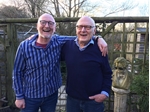
SCARILY, nearly half a century has passed since The Long and Winding Road became The Beatles’ last hit single.
Composed by Paul McCartney, it has gone on to make millions – but how many knew that a musical arranger and producer from the North-East was behind the transformation of the song – and was paid the princely sum of £40 for his efforts?
Richard Hewson, born in Norton, near Stockton, was the man who added the sweeping orchestral arrangements to the ballad without McCartney even being told about the interference.
And Richard confesses to not even knowing much about The Beatles when he made his mark on the history of arguably the most influential band the world has ever seen.
“I really didn’t know how big these people were,” he says. “I’d heard of The Beatles, obviously, but I didn’t realise when that record came out how huge it would be. I was just doing another gig.”
The Beatles were on the point of breaking up in 1970 when Richard was called in by EMI to work on a song on the Let it Be album. The Beatles’ new manager, Allen Klein, wasn’t happy with the album and hired Phil Spector to “clean it up&rdquo
details
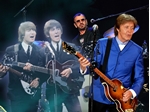
Help! I need somebody… like John Lennon and George Harrison perhaps?
In a stunning breakthrough of holographic miracle work, The Beatles will be brought back together for the first time in almost 50 years.
Two state-of-the-art holograms of deceased Beatles John Lennon and George Harrison will pave the way for a nine month world tour, giving a proper goodbye to the fan base, and add closure for Sir Paul McCartney and Sir Ringo Starr.
Thanks to the scientists and developers from Space X, Google, and a private laser corporation, Beatle legends Lennon and Harrison will be recreated into holograms called L.I.F.E forms, or Laser Intelligent Force Energy.
Not only will these holograms be realistic, but they have been programed to be completely conscious and responsive to the world around them whilst only on stage, as well as imitate the exact characteristics of the individual.
McCartney and Starr, the living members of the Beatles, each donated $10 million to the “Hello, Goodbye, Hello Fund,” aimed to raise money to further the production of these Lennon/Harrison models.
Source: Eric Ransom/thebannercsi.com

A promo copy of “Double Fantasy” signed for KCPX on Dec. 8, 1980, is on the block, with a starting price of $50,000.In the hours before John Lennon was murdered on Dec. 8, 1980, he and wife Yoko Ono posed for a Rolling Stone photo shoot with famed photographer Annie Leibovitz, sat for a radio interview with RKO’s Dave Sholin, went off to a recording session at the Hit Factory studio, and autographed a couple of copies of their joint album “Double Fantasy,” which featured Lennon’s first new music in five years.
One of those autographs was famously for Mark David Chapman, the man who, a few hours later, would shoot and kill Lennon outside the Dakota apartment building at 72nd Street and Central Park West in New York City.
Another was inscribed to Salt Lake City radio station KCPX.
Source: By Eric Walden /sltrib.com
details
A puppy named after The Beatles drummer Ringo Starr was forced to Twist and Shout when he got stuck in a television cabinet.
Owner Verity O'Neill, from Birkenhead, Merseyside, woke to the cries of the miniature Yorkshire terrier and, when she went downstairs, found him with his head stuck in a hole in the wooden unit.
She and a friend tried to rescue the eight-week-old terrier but he was stuck fast, and Ringo was only freed with a little help from his friends at the RSPCA.Ringo was taken to the vets to be checked out after his ordeal on Tuesday and had a bath to wash off the vegetable oil before being reunited with his owner.
"Ringo Starr was found in the morning but it's possible he could have become stuck for some time before, it could well have been A Hard Day's Night for him, until he started crying for help. "Poor Ringo Starr was very uncomfortable and panicked, but the hole was fairly tight and I wasn't able to free him at first, so with his owner's permission we quickly grabbed some vegetable oil from the kitchen to gently rub around his neck to help loosen him, and with some very careful manoeuvring, Ringo's head slid out of the cabinet and he was free."
Source: – RSPCA inspector An details

If you think love is the equivalent of a grueling week at work, you may be eligible to compete on Jeopardy.
The long-running game show puzzled some viewers and The Beatles fans Tuesday night with a Final Jeopardy round that may have misinterpreted the band’s 1964 hit “Eight Days a Week.”
Before wagering thousands of dollars to determine the game’s winner, contestants were given the prompt under the category of 1960s No. 1 songs: “Complaints about heavy workloads inspired the titles of 2 songs by this group, No. 1 hits 7 months apart.” Two of the contestants — Katy, who was in the lead heading into Final Jeopardy, and Robert, who was several thousand dollars behind — guessed correctly with The Beatles. But Robert took the win with game-winning wager of $11,000, giving him $23,601 in the end.
Alex Trebek explained the two back-to-back Beatles hits suggested from the clue were “A Hard Day’s Night” and “Eight Days a Week.” Now, The Beatles are perhaps a shoo-in for a category asking about a popular band from the 1960s, but some fans noted that “Eight Days a Week” isn’t about a “heavy workload.” Exhibit A:
details

Pete Best was 18 in 1960 and contemplating his future when Paul McCartney asked if he wanted to audition to join The Beatles. Best, then a rising young rock drummer in Liverpool, didn’t miss a beat in accepting.
“I got an offer from Paul to go to Germany, which I thought would be for a month or two,” he recalled.
“I went down and auditioned and did one show with them at the Jacaranda club. A couple of days after that, we were on our way to Hamburg. It was the first time there for all of us. That was the road that opened up, and I decided: ‘Yes, I’ll stay with it.’ I had been considering going to teachers training college.”
Best spent two years playing with The Beatles in Hamburg, Liverpool and points in between. This weekend, he makes his debut at the annual San Diego Beatles Fair, which takes place Friday and Saturday at Queen Bee’s in North Park.
Source: George Varga/sandiegouniontribune.com
details
One of the most vital political risk commandments to master is knowing the overall nature of the system you are evaluating in terms of its power distribution. Only by knowing the nature of the world you live in — and its stability — can any policy or any analysis actually hope to be successful.
The best (and most entertaining) way to look at the change of power dynamics in a world order is to chronicle the startlingly quick unraveling of the greatest pop group in history. The Beatles went in lightning fashion from a period of artistic and commercial dominance in the mid-1960s (with “Rubber Soul,” “Revolver,” and “Sgt. Pepper’s Lonely Hearts Club Band”) to their demise in 1970 (following “Let It Be” and “Abbey Road”) in a blink of a historical eye.
Source: John C. Hulsman/marketwatch.com
details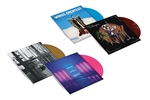
Two of Paul McCartney's most recent records, along with one of his most obscure efforts and a Wings compilation, will be included in his next batch of albums to be reissued. New, Chaos and Creation in the Backyard, Thrillington and Wings Greatest will be re-released on CD and vinyl on May 18.
Thrillington is the one that will likely have the most appeal to collectors. In 1971, McCartney produced a lounge-jazz instrumental version of his newly released Ram LP. But he formed Wings shortly after completing the record and decided to shelve it until 1977. He used the pseudonym Percy "Thrills" Thrillington and created a backstory in the liner notes (written by McCartney under the name "Clint Harrigan") about a U.K. socialite who was friends with McCartney. The former Beatle even took out newspaper ads that chronicled Thrills' adventures. It was believed at the time that McCartney was behind Thrillington, but he didn't admit his role until 1989.
Source: ultimateclassicrock.com
details